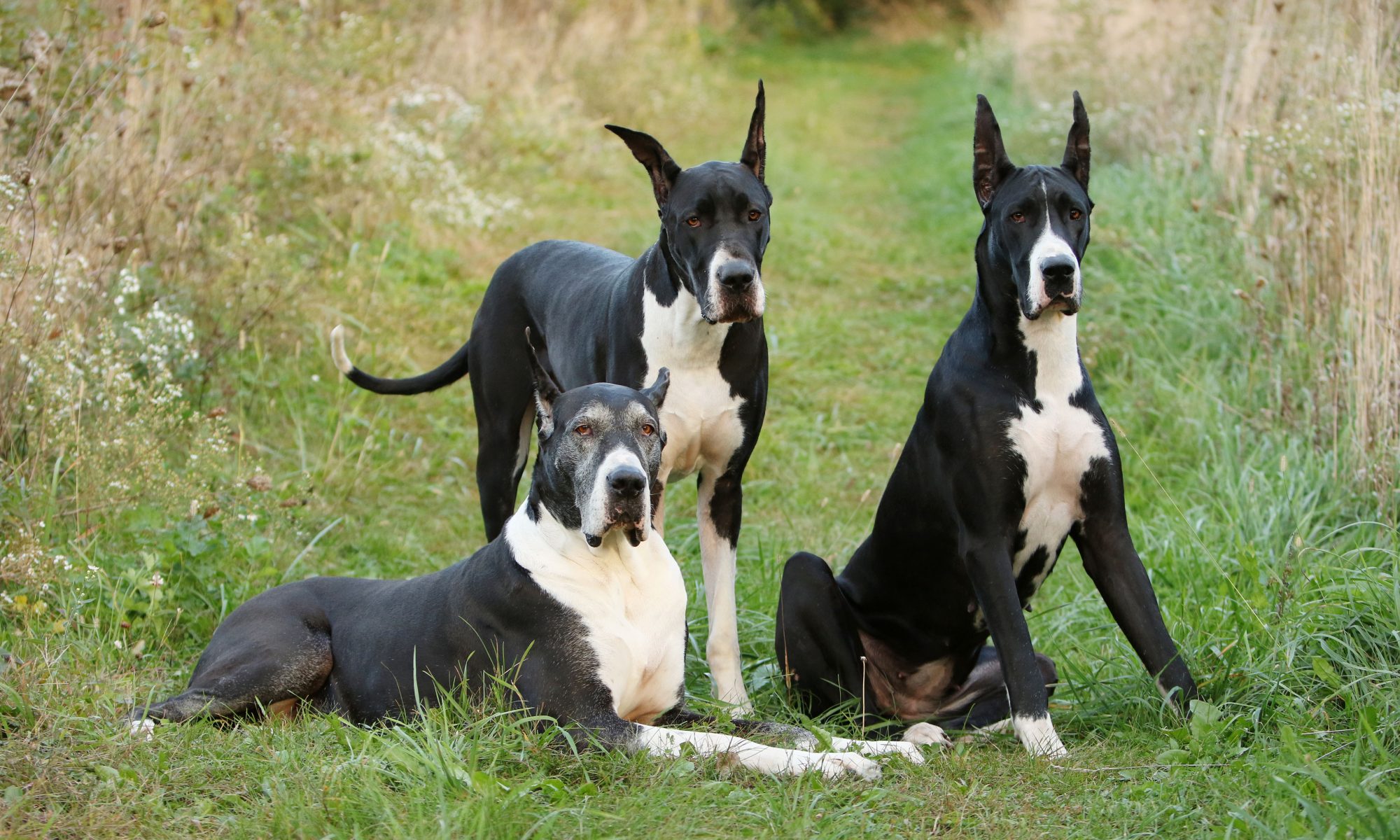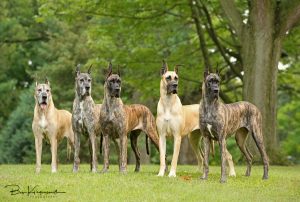
If you have not personally spent some time around full-grown Danes, seek out the opportunity before committing to your new addition. If you don’t know any Dane owners, contact a Great Dane club and see if any members would be willing to meet with you. Or, find an AKC dog show to attend to meet some Danes and Dane owners.
Danes are a giant breed. Giant breeds have giant costs. Things like crates, beds, collars, toys, food, boarding, medications, etc. all cost more than the “average” sized dog. Be prepared for those expenses before you get a Dane. The purchase price of a responsibly bred Dane pup will be in the range of $2000-3500. There are no bargain puppies. While price does not equal quality, if you find someone selling a puppy for substantially less, it will likely come with vet bills and heartache.
Danes are prone to bloat, which is when their stomachs fill with gas and then often rotate (torsion), which cuts off blood to the stomach tissue, and potentially other organs impacted, and can become fatal very fast. Because of this, I do preventative gastropexies on all of my dogs once they are mature. The prices for a prophylactic gastropexy can vary greatly, anywhere from $800-2000. That should be a planned expense.
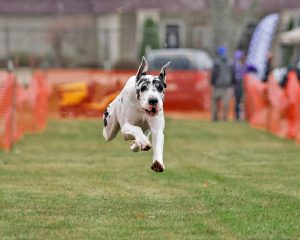
Danes are not the couch potatoes that many think. Especially the first couple of years, Danes need plenty of free running exercise. Be prepared to deal with a 100+ lb puppy until 18-24 months old. You will need a safe place to exercise your dog, to allow the dog to run at full speed and zoom around, on a frequent basis.
Danes are not as slobbery as some other breeds, but some are slobber masters. If you are really opposed to potential slobber on your ceiling or walls, you should consider a different breed. None of mine over the years have been excessive slobbers, but I have known some that are faucets. You can likely get an idea of how much slobber to which a youngster might be prone by observing the parents. Mine just make a mess with their water drinking, so a rug is kept under the water bowl and we take advantage of water bowls outside after play times.
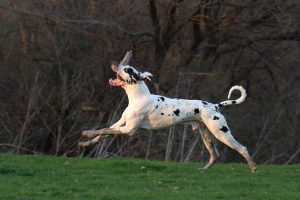
Danes are sensitive, which is something I adore about them. They do need a firm hand while training, but also a soft one. Owners need to plan to start training and socializing immediately upon bringing home their new puppy.
Danes are amazingly silly and playful.
I frequently hear people comment that Danes “don’t live long enough”. While it is true that giant breeds have shorter life spans than small dogs, I have known plenty of Danes that have made it well past 10 years old. A big key is to get a dog from a breeder who knows and cares about producing healthy dogs. A breeder who health tests their dogs prior to deciding to breed them and can provide documented proof of the health testing.
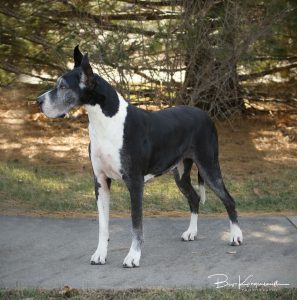
Of course, even the best breeders will have dogs with shortened life spans. Unfortunately, we cannot control nature and there are many environmental factors that influence life span.
Once you decide that the breed is right for you, the next decision is where to acquire one. If you are open to the idea of an adult dog, consider a Dane specific rescue group. Rescue is a great way to obtain an awesome pet, especially if you are on a budget.
Not all rescues are good. A good rescue group keeps each dog in their care long enough to be able to evaluate the dog’s temperament and placement needs. They also take care of any medical needs, including spaying/neutering. They screen potential homes, to best ensure a good and permanent home for the dogs in their care. For a list of good Dane rescue groups, check out the GDCA Rescue listing.

If you would like to purchase a puppy, there is even a greater challenge in finding a good breeder. Bad breeders vastly outnumber the good ones. Jump over to Selecting a Breeder.
